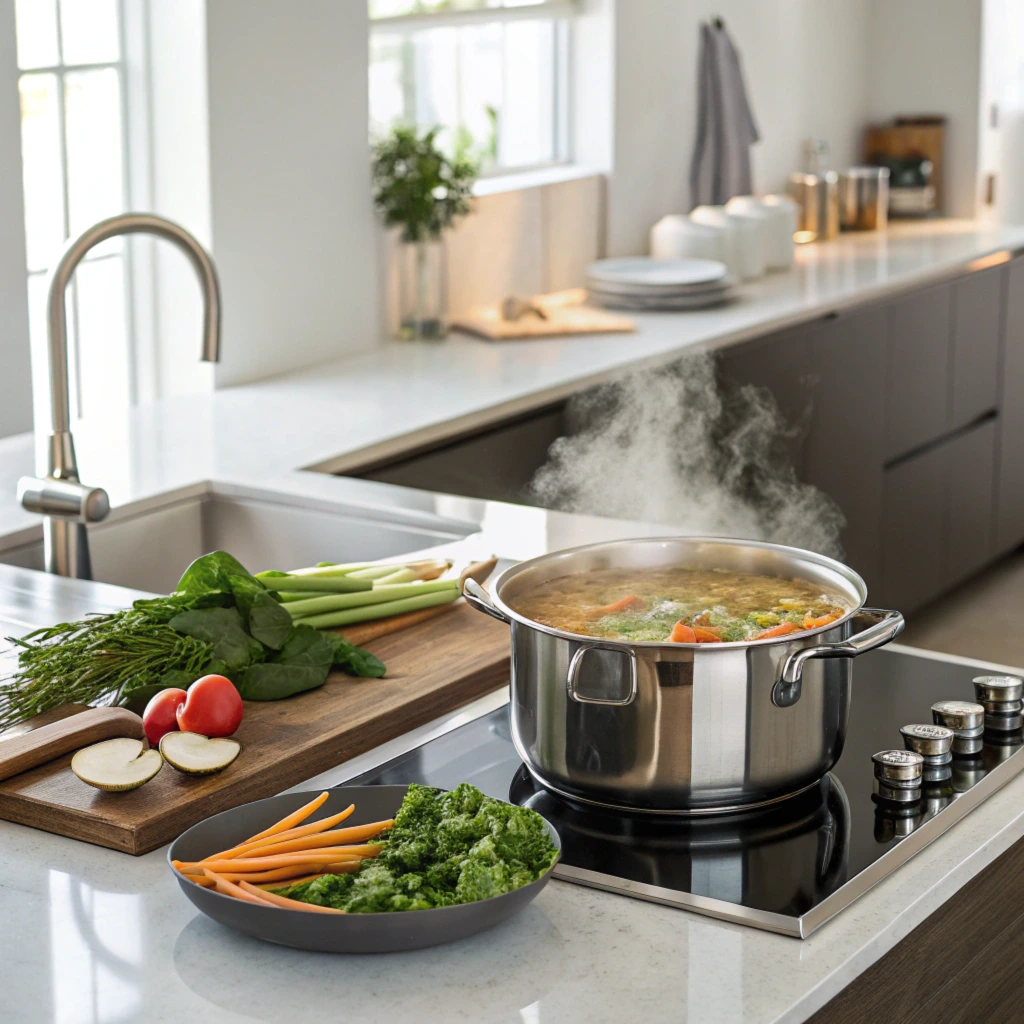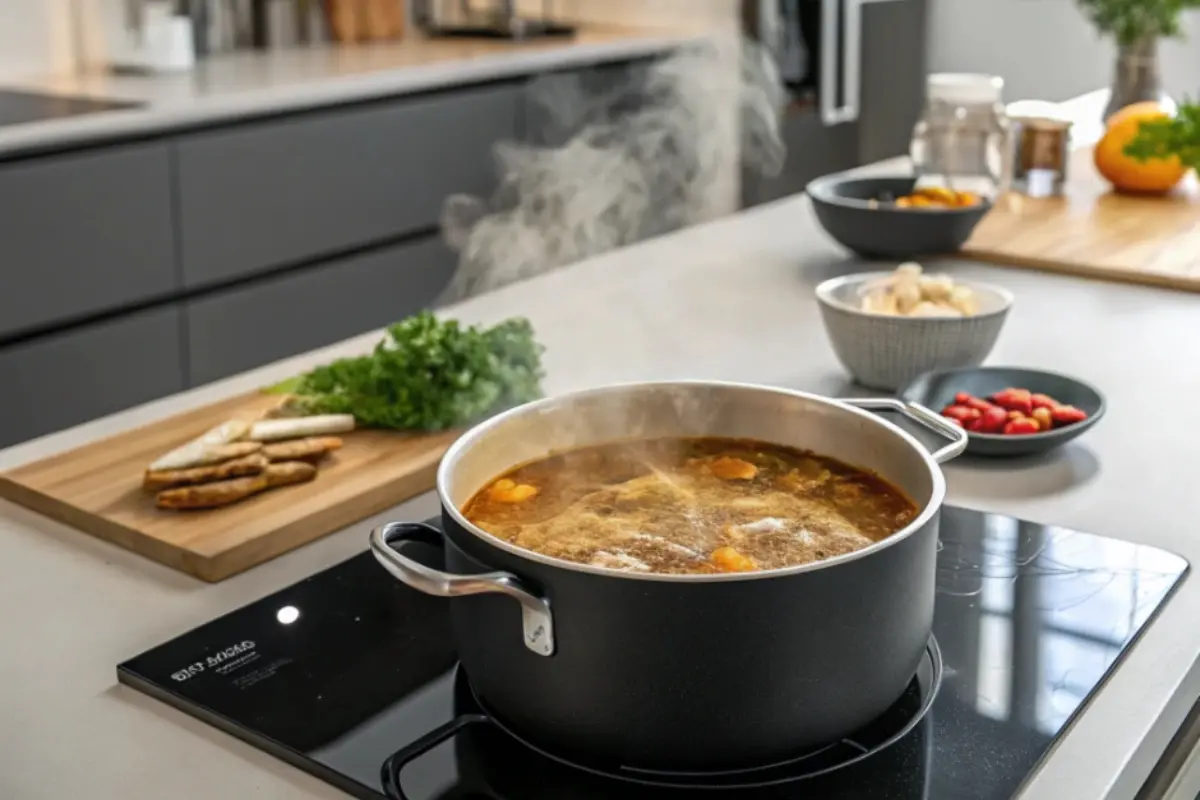Soup bones are a hidden gem in the culinary world. They transform simple ingredients into flavorful, nutrient-packed broths, soups, and stews. In this guide, we’ll uncover everything you need to know about soup bones from choosing the right ones to cooking them perfectly, and even exploring their incredible health benefits. Whether you’re a seasoned chef or just starting out in the kitchen, you’ll find plenty of tips and recipes to elevate your meals using these versatile ingredients.
Let’s dive into the deliciously satisfying world of soup bones, starting with the basics!
What Are Soup Bones?
Definition of Soup Bones
Soup bones are exactly what they sound like, bones used to make soup! They’re typically derived from animals like cows, pigs, or chickens and often come with bits of meat, marrow, and connective tissue attached. These components are packed with flavor and nutrition, making soup bones a cornerstone of traditional cooking across many cultures.
There are several types of soup bones to choose from, depending on the dish you’re making. Beef marrow bones, for instance, are ideal for rich, hearty broths, while pork knuckles add a distinct sweetness to soups. If you’re making chicken soup, opt for carcasses or wings, which release plenty of collagen when simmered.
Nutritional Value of Soup Bones
Soup bones aren’t just about taste; they’re also a nutritional powerhouse. When simmered slowly, bones release essential nutrients like calcium, magnesium, and phosphorus, which are crucial for maintaining strong bones and teeth. Marrow-filled bones are rich in healthy fats, while connective tissues provide a natural source of collagen, the protein that keeps your skin, joints, and gut healthy.
What’s more, the long cooking process extracts amino acids like glycine and proline, which can help reduce inflammation and promote overall well-being. It’s no wonder bone broths and soups are touted as superfoods!

How to Choose the Best Soup Bones
Where to Source Soup Bones
Finding high-quality soup bones doesn’t have to be a chore. You can often find them at farmers’ markets, butcher shops, or even your local grocery store. However, if you’re after the best flavor and nutrition, seek out organic and grass-fed options. These tend to come from animals raised in healthier environments, resulting in bones that are not only better for you but also better for the environment.
If you’re lucky enough to live near a butcher, ask for their recommendations. Many butchers save marrow bones or knuckles specifically for soups and broths. Grocery stores often stock pre-packaged soup bones in the meat aisle, though they may not always be labeled as such.
Tips for Identifying Quality Bones
Not all soup bones are created equal, so it’s crucial to pick ones that will deliver the best results. Look for bones that are fresh and free of discoloration. Marrow-rich bones, like femur or shank cuts, are ideal for broths, as they release collagen and a creamy texture when cooked. If you’re buying chicken or pork bones, ensure there’s still some meat or connective tissue attached, as this will enhance the broth’s flavor.
Additionally, choosing a mix of bones like joint bones for gelatin and meaty bones for taste creates a balanced and nutritious broth. With these tips, you’ll be set up for success before you even start cooking!
Preparing Soup Bones for Cooking
Pre-Cooking Preparations
Before you can unlock the full potential of your soup bones, a bit of prep work is essential. Start by rinsing the bones under cold water to remove any impurities. If you’re working with beef or pork bones, blanching them in boiling water for a few minutes helps draw out excess blood and surface residue. This step ensures a clear, clean broth.
Roasting is another optional but highly recommended step. Roasting beef or pork bones at 400°F for 20–30 minutes brings out deep, caramelized flavors. This technique adds richness to broths and is especially great for recipes like beef bone soup.
Essential Tools for Cooking
Creating a great broth or soup from soup bones doesn’t require fancy equipment, but a few tools make the process smoother. A large stockpot is a must for simmering, though a slow cooker or Instant Pot is a great hands-off alternative. A fine-mesh strainer is invaluable for removing bits of bone or impurities after cooking, leaving you with a silky, smooth broth.
Don’t forget simple tools like a skimmer to remove foam during cooking or a ladle to portion out your finished broth. With the right tools and techniques, you’ll be ready to turn your soup bones into a culinary masterpiece.
Recipes Using Soup Bones
Classic Beef Bone Broth
Few things are as comforting as a steaming bowl of homemade beef bone broth. This recipe is perfect for anyone wanting to unlock the rich flavors of soup bones. Begin by gathering beef marrow bones, water, onions, carrots, celery, garlic, and herbs like thyme and parsley. Roast the bones at 400°F for 30 minutes to deepen their flavor, then transfer them to a large stockpot. Add the vegetables and herbs, cover with water, and let everything simmer gently for 12–24 hours.
Don’t forget to skim the surface occasionally to remove impurities. The result is a broth that’s both flavorful and nutrient-packed, ideal for sipping on its own or as a base for soups and sauces.
Hearty Vegetable Soup with Soup Bones
For a wholesome dinner, try a hearty vegetable soup using beef or chicken soup bones. Combine your favorite veggies think carrots, zucchini, tomatoes, and spinach with pre-cooked bone broth. Add the soup bones during the initial cooking process to enhance the flavor. Let it simmer until the vegetables are tender and the flavors meld together beautifully. This recipe is versatile, allowing you to swap in seasonal produce or whatever you have on hand.
Other Popular Recipes
Soup bones are incredibly adaptable, shining in dishes like pho, ramen, and hearty stews. For pho, add spices like star anise, cinnamon, and cloves to your broth. Ramen recipes often include soy sauce, miso, and ginger for an umami punch. Stews benefit from soup bones too, with their gelatin creating a luxuriously thick consistency.
For more delicious recipes, you might enjoy checking out the Pastina Soup Recipe on Library Recipes.
Health Benefits of Soup Bone-Based Diets
Bone Broth for Joint Health
One of the standout benefits of soup bones is their role in joint health. The gelatin extracted from the bones during cooking is rich in collagen, a protein that supports cartilage, which cushions your joints. Regularly consuming bone broth may help reduce joint pain and stiffness, especially for people with arthritis or high physical activity levels.
Gut Health and Immunity Boost
Soup bones are also celebrated for their ability to promote gut health. The collagen and amino acids found in bone broths, such as glycine and glutamine, help repair the lining of the digestive tract. This makes it particularly beneficial for individuals with conditions like leaky gut syndrome.
Furthermore, bone-based broths are loaded with minerals like calcium, magnesium, and phosphorus, which strengthen your bones and teeth. The immune-boosting properties of soups made from soup bones are well-documented, thanks to their ability to provide a concentrated dose of essential nutrients.
Adding soup bones to your diet isn’t just delicious, it’s a natural way to support your overall health. Up next, we’ll dive into frequently asked questions about soup bones to answer any lingering curiosities!
FAQs About Soup Bones
Can You Reuse Soup Bones?
Absolutely! Many people reuse soup bones to extract as much flavor and nutrients as possible. After the first simmer, bones can still provide a decent broth for a second or even third round. However, with each reuse, the broth becomes lighter in flavor and color. For the best results, add fresh vegetables and herbs during subsequent batches to refresh the taste.
How Long Can You Store Soup Bones?
If you’re not cooking them immediately, store soup bones properly to keep them fresh. Raw bones can be kept in the refrigerator for up to five days. For longer storage, freeze them in airtight containers or vacuum-sealed bags. Cooked bones should also be refrigerated and used within three days or frozen for future use.
Are Soup Bones Environmentally Friendly?
Yes, they are! Using soup bones reduces food waste by making the most of every part of the animal. This sustainable practice benefits both your meals and the planet.
Conclusion and Final Thoughts
Marrow bones are a humble yet powerful ingredient that transforms everyday cooking into something extraordinary. Whether you’re crafting a flavorful broth, a hearty stew, or a nutrient-rich soup, these versatile ingredients bring a wealth of flavor and benefits to your kitchen. Let’s dive deeper into why they deserve a permanent spot in your culinary repertoire and explore some creative ways to make the most of them.
The Versatility of Soup Bones
One of the best things about marrow bones is their adaptability. While they’re most commonly used to make broth or stock, their uses extend far beyond. You can incorporate them into classic recipes like French onion soup, beef pho, or chicken noodle soup. The gelatin and marrow extracted during cooking provide a depth of flavor that elevates even the simplest dishes.
If you’re looking to experiment, try using bone bases as a foundation for gravy, sauces, or risotto. Adding homemade broth made from these ingredients to your recipes ensures they’re packed with flavor and nutrition. For vegetarian friends and family, you can use the same slow-simmering techniques to create a vegetable broth, though it won’t include the unique richness that marrow bones provide.
How to Use Soup Bones in Meal Prep
Meal prepping is a game-changer for busy households, and marrow bones are a perfect fit. A large batch of homemade broth can be portioned and stored in the freezer for later use. Freeze it in silicone molds or ice cube trays for easy access to small quantities. These frozen broth cubes are ideal for adding a boost of flavor to recipes like stir-fries, sauces, or even mashed potatoes.
Moreover, prepping soups or stews with nutritious bone broth ahead of time ensures you always have a wholesome, ready-to-eat meal on hand. Pair the broth with cooked grains or pasta, and store them separately to maintain their texture.
Sustainability and Ethical Eating
Using marrow bones isn’t just a smart cooking choice, it’s an environmentally friendly one too. By incorporating these leftover parts into your meals, you’re reducing food waste and maximizing the use of every part of the animal. This practice aligns with ethical eating principles, ensuring that nothing is wasted.
For an even more sustainable approach, consider sourcing bones from local farmers or butchers who prioritize humane animal farming. Grass-fed and pasture-raised options not only enhance the flavor of your broth but also support eco-friendly practices.
Enhancing Your Broth with Additions
While soup bones provide a strong base for any recipe, you can amplify their flavor with simple additions. Herbs like rosemary, thyme, and bay leaves add a savory depth, while garlic and ginger introduce a warming kick. Vegetables like leeks, parsnips, or even a splash of apple cider vinegar enhance the broth’s complexity.
For an international twist, try adding ingredients like lemongrass for Thai-inspired dishes or cinnamon and star anise for a Vietnamese pho base. Each variation offers a unique flavor profile, making it easy to tailor the broth to your preferences.
Health and Wellness Benefits
Incorporating marrow bones into your diet isn’t just about taste, it’s a step toward better health. Broths made from these nutritious ingredients are rich in collagen, which supports joint health, skin elasticity, and gut function. The natural amino acids like glycine and proline aid in digestion, reduce inflammation, and promote restful sleep.
Athletes and fitness enthusiasts often turn to bone broths as a post-workout recovery option. The minerals and nutrients help replenish the body, while the gelatin soothes inflammation. Additionally, sipping warm bone broth is a comforting way to stay hydrated during colder months.
Why Soup Bones Should Be a Staple
With so many benefits and uses, it’s clear that marrow bones and bone broth bases are more than just byproducts, they’re cornerstones of nourishing and delicious meals. Whether you’re an experienced cook or just starting out, incorporating these versatile ingredients into your kitchen routine will elevate your recipes and improve your overall well-being.

